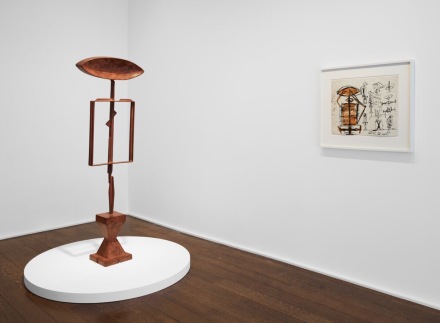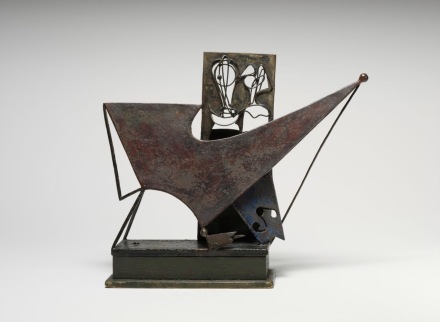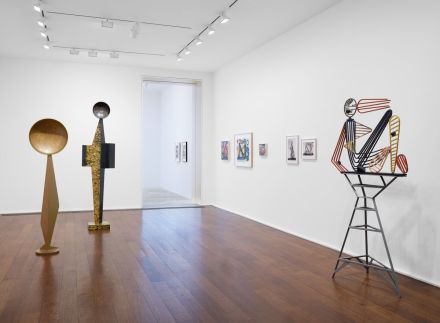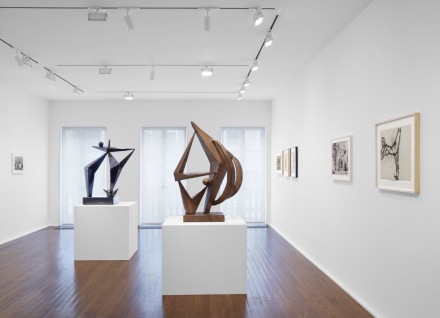
David Smith, Follow My Path (Installation View), via Hauser and Wirth
In a 1952 lecture at the Detroit Institute of Arts, sculptor David Smith described the inspiration behind one of his recent sculptures, saying “My wish is that you travel by perception the path which I traveled in creating it. That same wish goes for the rest of my work.” Welcoming the viewer to follow that same path, Hauser & Wirth is currently presenting a body of the artist’s work at its uptown exhibition space in New York, inviting viewers to explore the artistic processes by which Smith reshaped sculpture’s form and function, embarking on new terrain in the field of abstraction.

David Smith, Billiard Player Construction (1937), via Hauser and Wirth
A member of the abstract expressionist generation, Smith eschewed the conventional sculptural methods of casting and carving in favor of modern industrial techniques and materials such as torch-cutting and welding iron and steel. Working first in Brooklyn and then largely in isolation in the remote hamlet of Bolton Landing in the Adirondack Mountains, he produced art inspired by transitory connections between human experience and nature, works that are at once self-contained yet expressively expansive. Here, the show takes that same sense of invention and reinvention, following the artist’s work alongside studies, notes and writings that illuminate his interest and investigation in the bounds and limits of the field. Featuring works of art from major museums, international private collections, and the Estate of David Smith, the show offers a deeper look than most shows have previously attempted to look at the artist’s work in its totality.

David Smith, Follow My Path (Installation View), via Hauser and Wirth
Smith’s special ability to fuse the influences of Surrealism and Cubism in abstract depictions of the human body is evident throughout the exhibition. The Hero (1951-1952) is a life-sized female figure with a head, torso, and two triangularly shaped forms suggesting breasts. This bravura sculpture achieves surprising weightlessness through its radical open structure. Similarly, Blue Construction (1938), one of Smith’s earliest forays into sculpture, masterfully deploys geometric form to recall the arabesque movement of a dancer in space. This steel work, coated in blue enamel, was achieved via Smith’s experimental approach to three dimensions. For this sculpture, and two others based on the subject of billiards players, Smith’s process from figuration to abstraction is revealed through the presentation of a rich selection of sculptures, drawings, and paintings from the 1930s and 1940s.

David Smith, Follow My Path (Installation View), via Hauser and Wirth
As a whole, the show takes Smith’s work as a series of investigations and dives into his surroundings and foundational texts, using the world around him to create new ways of seeing.
The show is on view through July 30th.
– D. Creahan
Read more:
David Smith: Follow My Path [Exhibition Site]



